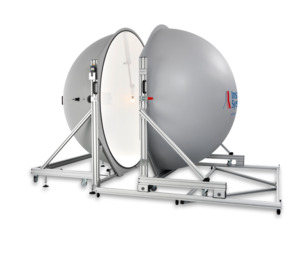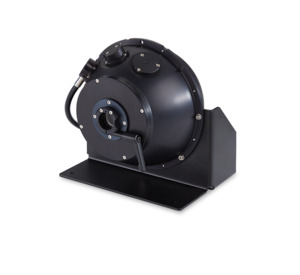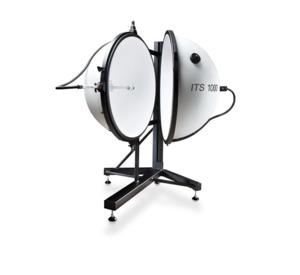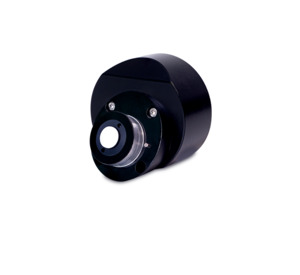Precise determination of luminous flux with integrating spheres
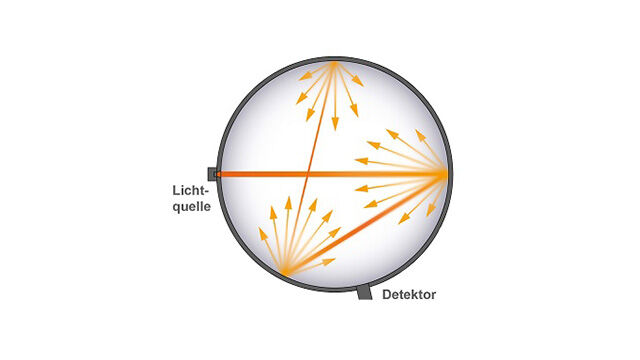
Determination of radiant power or luminous flux from light sources with the aid of integrating spheres is one of the most important procedures in photometry. Designed as a hollow sphere whose inner surface is coated with a diffusely reflecting material, the integrating sphere ensures complete integration and mixing of light radiation. This is then output on a detector port for measurement.
Measurement geometries of an integrating sphere
Luminous flux is determined according to lamp type in different measurement geometries.
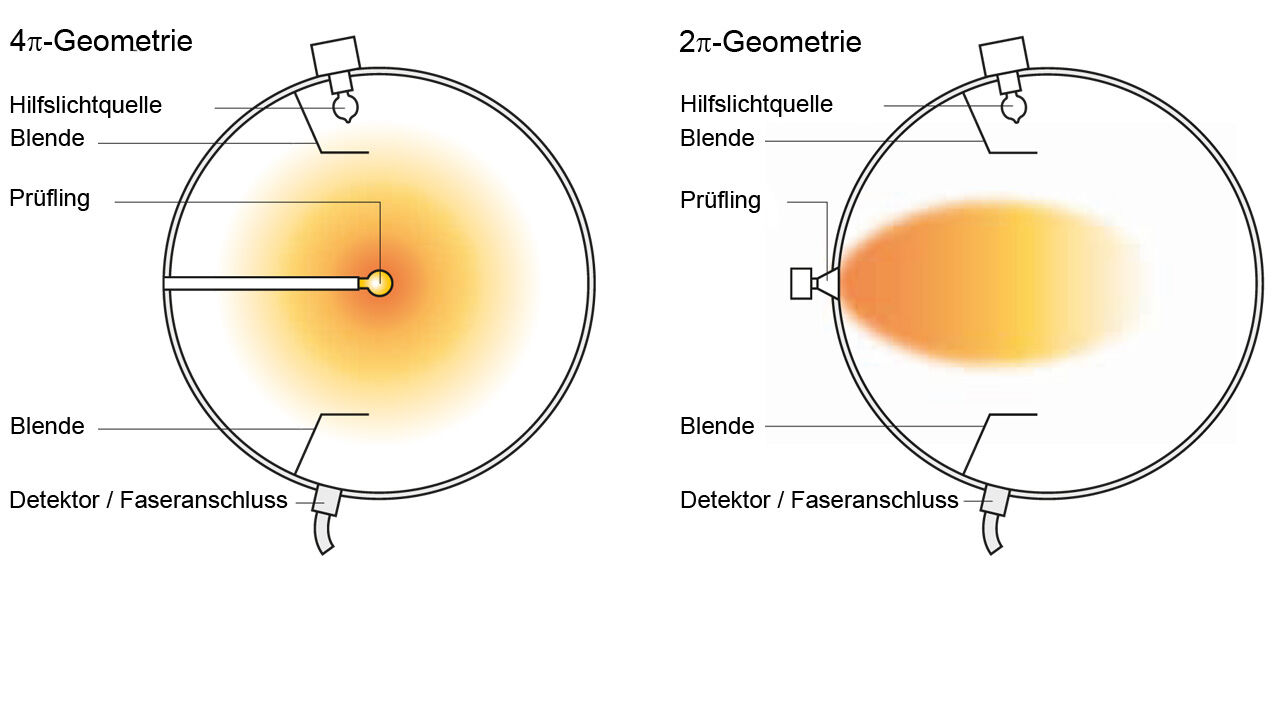
- 4π geometry
4π geometry is used to determine the luminous flux of all-round radiating light sources. For this purpose, the light source is centered on the integrating sphere and the radiation emitted in all directions is captured. - 2π geometry
In 2π geometry the light source is located on the sphere wall. This configuration is only suitable for light sources without back radiation, typically also for LED products.
Instrument Systems: development and production in Germany
At its production facilities in Berlin and Munich, Instrument Systems manufactures high-quality integrating spheres with diameters from 50 to 2000 mm. With different coatings it caters for a wide range of technologies and customer requirements. We will be pleased to advise you!
The right integrating sphere for every application
LED/SSL
The ISP series of barium sulfate-coated integrating spheres are the right choice for the measurement of LEDs and SSL luminaires of all sizes. They have the highest reflection value in the visible spectral range up to 97%. >>
UV-/IR-LEDs
Especially for measurement of UV and IR LEDs, Instrument Systems developed PTFE-coated integrating spheres with internal diameters of 50 to 250 mm. They ensure a high throughput, in the range from 200 nm to 2500 nm. >>
Automotive/Traffic lighting technology
The Optronik line of ITS integrating spheres was specially designed for the characterization of lamps and modules in the automotive industry and traffic lighting technology. With flexible lamp adjustment, three different burning positions (hanging, standing and horizontal) can be achieved. >>
Possible applications:
- Measurement of luminous flux
- Quality control of LED modules
- Homogeneous light source
- Diffuse transmission and reflection measurements
